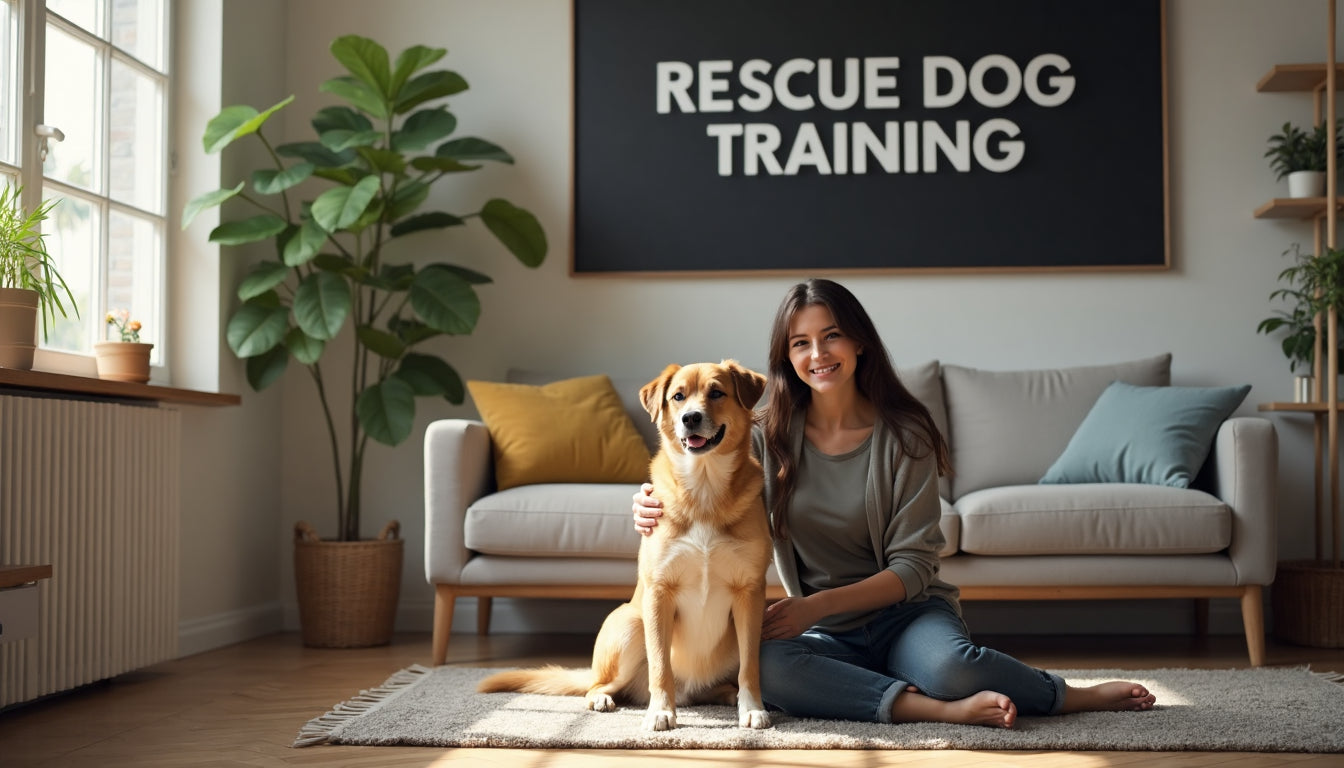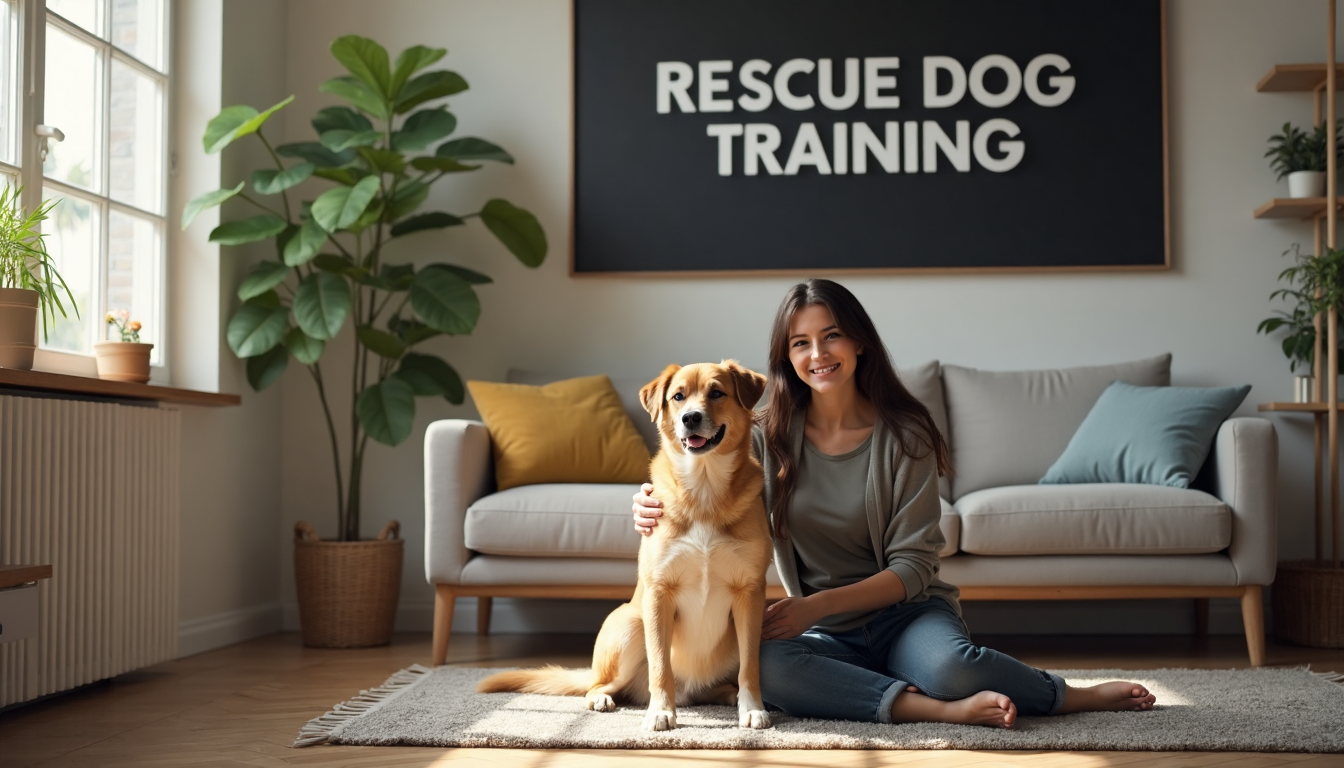
Training a rescue dog is a unique challenge that many new owners underestimate. More than 70 percent of rescue dogs show anxiety behaviors rooted in their past. You might think overcoming that fear is the hardest part. Surprisingly, building trust is actually the game changer, and it all comes down to using the right positive reinforcement techniques from day one.
Table of Contents
- Building Trust With Your Rescue Dog
- Essential Rescue Dog Training Techniques
- Addressing Behavior Challenges In Rescue Dogs
- Training Tips For Service And Senior Rescue Dogs
Quick Summary
| Takeaway | Explanation |
|---|---|
| Understand Your Dog’s Emotional Landscape | Recognizing the unique psychological backgrounds of rescue dogs is crucial for building trust and creating a safe environment during training. |
| Utilize Positive Reinforcement Techniques | Employ consistent rewards and predictable routines to help rescue dogs form positive associations and overcome their past traumas. |
| Adopt Advanced Training Strategies | Implement specialized techniques such as non-verbal communication and structured socialization to strengthen the bond and improve behavior with rescue dogs. |
| Address Behavioral Challenges Systematically | Identify and develop targeted intervention strategies for common issues like aggression and anxiety to facilitate successful behavioral rehabilitation. |
| Tailor Training Approaches for Service and Senior Dogs | Recognize the unique needs of service and senior rescue dogs by employing gentler strategies and focusing on individualized training plans. |
Building Trust With Your Rescue Dog
Rescue dogs often arrive with complex emotional backgrounds that require specialized approaches to building trust and connection. Understanding their unique psychological needs becomes the foundation of successful rescue dog training.
Understanding Your Rescue Dog’s Emotional Landscape
Every rescue dog carries a unique history of experiences that shape their current behavior and emotional responses. Learn more about rescue dog rehabilitation strategies to help you navigate these complex emotional terrains. According to research from animal behavior experts, approximately 70% of rescue dogs exhibit anxiety-related behaviors rooted in past traumatic experiences.
Recognizing these behavioral patterns requires patience and keen observation. Signs of emotional distress might include excessive cowering, sudden startling, reluctance to make eye contact, or seemingly unpredictable reactions to specific sounds or movements. Your primary goal is creating a consistent, predictable environment that helps your dog feel safe and secure.
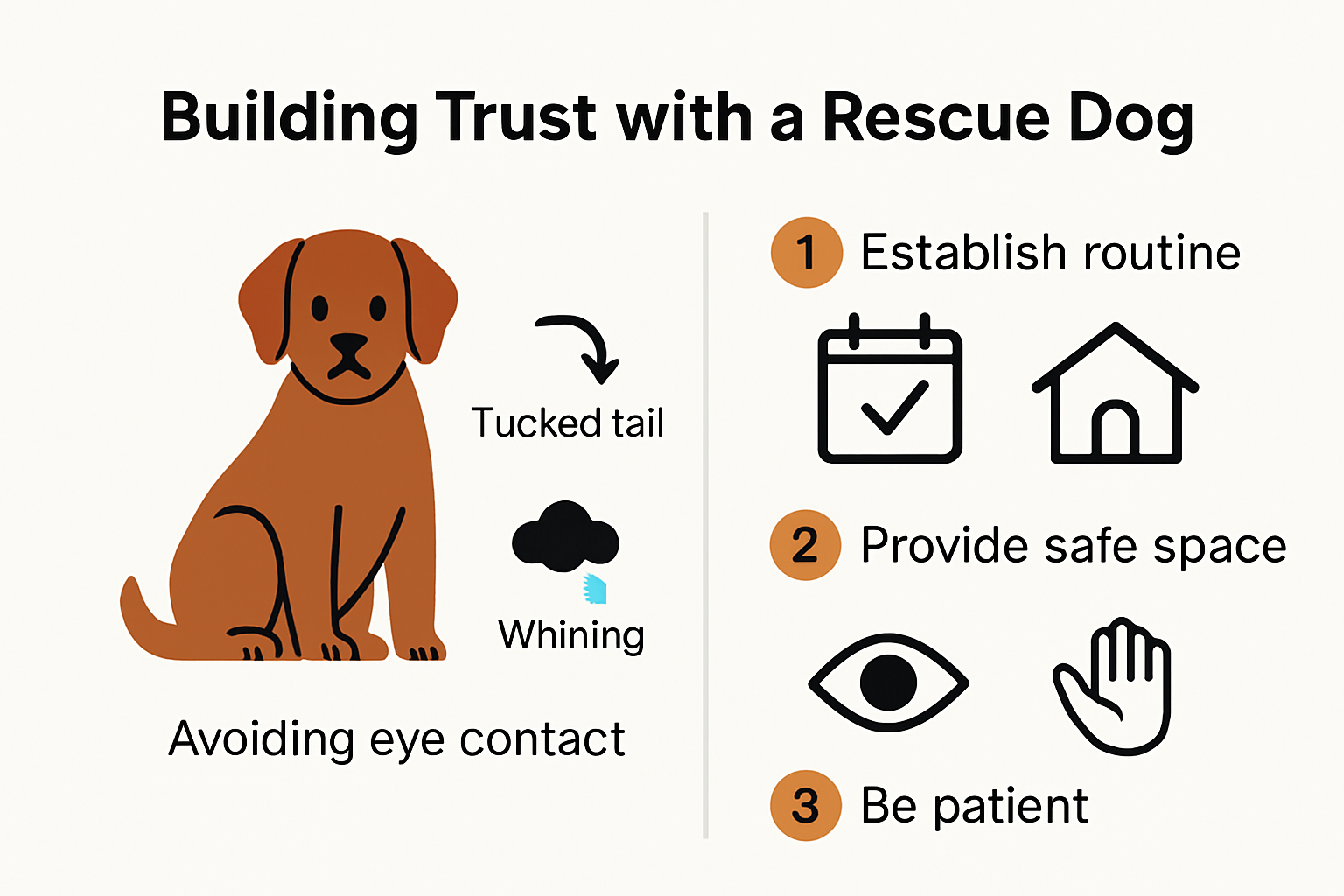
Positive Reinforcement as a Trust Building Strategy
Positive reinforcement stands as the most effective method for building trust with a rescue dog. Research from veterinary behavioral specialists emphasizes that reward-based training creates positive associations and helps dogs overcome past negative experiences.
Key strategies for positive reinforcement include:
- Consistent Rewards: Use high-value treats, gentle praise, and calm interactions to reinforce desired behaviors.
- Predictable Routines: Establish consistent feeding times, walking schedules, and training sessions to create a sense of security.
- Gradual Exposure: Slowly introduce new experiences, environments, and social interactions to prevent overwhelming your rescue dog.
Patience becomes your most crucial tool. Some rescue dogs might take weeks or even months to fully trust their new environment. Your commitment to gentle, consistent training will gradually help them understand they are now in a safe, loving home.
Creating Safe Training Environments
The physical and emotional environment of training plays a critical role in building trust. Choose quiet, comfortable spaces for initial training sessions. Minimize sudden loud noises, avoid aggressive body language, and maintain a calm demeanor. Your rescue dog will read your emotional state, so staying relaxed and positive is essential.
Remember that trust is not built overnight. Each small positive interaction contributes to your dog’s sense of safety and belonging. Celebrate minor progress, be patient with setbacks, and maintain unwavering consistency in your approach.
By understanding your rescue dog’s unique emotional journey and implementing compassionate, scientifically backed training methods, you can transform their past experiences into a foundation for a loving, trusting relationship.
Essential Rescue Dog Training Techniques
Successful rescue dog training requires a nuanced approach that goes beyond standard pet training methods. Professional trainers recognize that rescue dogs need specialized techniques that address their unique emotional and behavioral backgrounds.
Fundamental Training Assessment and Approach
Learn more about customized training strategies that help rescue dogs transition successfully. According to global behavior research, customized training plans have shown remarkable success in addressing specific behavioral challenges in rescue dogs.
The initial training assessment involves understanding your dog’s individual history, temperament, and potential triggers. Professional behaviorists recommend a comprehensive evaluation that includes:
- Behavioral History: Gathering information about past experiences and potential trauma
- Temperament Evaluation: Assessing individual personality traits and stress responses
- Physical Health Check: Identifying any medical conditions that might impact training
Positive Reinforcement and Progressive Training
Research from animal behavior experts indicates that positive reinforcement techniques are crucial for rescue dogs. These methods focus on rewarding desired behaviors rather than punishing unwanted actions.
Key progressive training techniques include:
- Gradual Exposure: Slowly introducing new environments and experiences
- Counter-Conditioning: Replacing negative associations with positive experiences
- Desensitization: Reducing anxiety by systematically and safely exposing dogs to stress triggers
Trainers emphasize the importance of patience and consistency. Some rescue dogs might require months of gentle, structured training to overcome past traumas and develop trust.
Advanced Communication and Bonding Techniques
Successful rescue dog training goes beyond basic obedience. Specialized training approaches focus on developing deep communication and emotional connection.
Advanced techniques include:
- Developing non-verbal communication signals
- Creating predictable daily routines
- Using calming techniques to manage anxiety
- Implementing structured play and interaction methods
Professional trainers recommend tailoring these techniques to each dog’s unique emotional landscape. What works for one rescue dog might not be effective for another. The key is maintaining flexibility, showing unconditional patience, and celebrating small victories throughout the training journey.
By understanding and implementing these essential rescue dog training techniques, owners can transform challenging behavioral patterns into opportunities for growth, trust, and deep companionship.
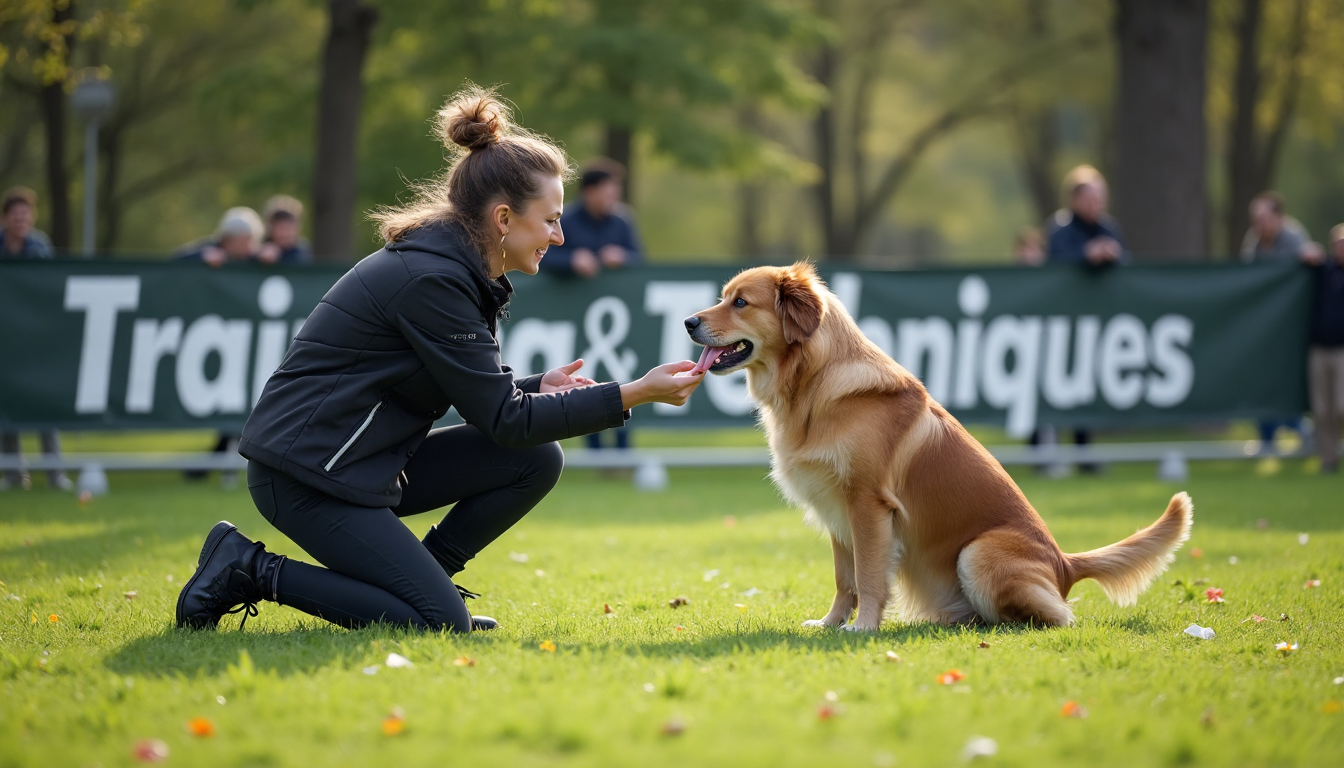
Addressing Behavior Challenges in Rescue Dogs
Rescue dogs often arrive with complex behavioral patterns that can challenge even experienced pet owners. Understanding and effectively addressing these challenges requires a strategic, compassionate approach that recognizes the unique emotional landscape of each individual dog.
Identifying Common Behavioral Issues
Explore comprehensive behavioral training strategies to support your rescue dog’s rehabilitation. According to comprehensive research, more than 99% of dogs exhibit at least one potentially problematic behavior, with key challenges including:
- Aggression: Manifesting in 55.6% of rescue dogs
- Separation Anxiety: Affecting up to 85.9% of adopted dogs
- Fear and Anxiety Responses: Observed in approximately 49.9% of cases
Recognizing these behaviors requires careful observation and understanding. Each behavior often stems from past traumatic experiences or lack of early socialization. Professional behaviorists emphasize the importance of identifying triggers and developing targeted intervention strategies.
Systematic Behavior Modification Techniques
Research from animal behavior specialists highlights that behavioral issues are a leading cause of adoption returns, with 8% to 44% of dogs being rehomed due to unresolved behavioral challenges. Effective modification techniques include:
- Desensitization: Gradually exposing the dog to triggering stimuli in a controlled, positive environment
- Counter-Conditioning: Replacing negative emotional responses with positive associations
- Structured Socialization: Carefully managed interactions to build confidence and reduce fear
The key is patience and consistency. Longitudinal studies demonstrate that with proper support, 93.7% of owners report significant improvement in their rescue dog’s behavior, and 100% confirm successful home adjustment.
Holistic Approach to Behavioral Rehabilitation
Addressing rescue dog behavior challenges requires a comprehensive strategy that goes beyond simple training techniques. This holistic approach involves:
- Professional behavioral assessments
- Veterinary consultations to rule out medical issues
- Tailored training programs
- Mental and physical enrichment activities
- Consistent routine and positive reinforcement
Owners must understand that behavioral rehabilitation is a journey, not a destination. Some dogs may require months or even years of patient guidance to fully overcome their past experiences. The most successful approaches combine professional expertise, unwavering compassion, and a deep commitment to understanding the individual dog’s unique emotional needs.
By approaching behavioral challenges with knowledge, empathy, and strategic intervention, owners can transform challenging behaviors into opportunities for growth, building a strong, trusting relationship with their rescue dog.
Training Tips for Service and Senior Rescue Dogs
Training service and senior rescue dogs requires specialized approaches that recognize their unique physical, emotional, and skill development needs. These dogs demand tailored strategies that go beyond traditional training methods, focusing on individual capabilities and potential.
Specialized Service Dog Training Considerations
Discover comprehensive service dog training techniques that transform rescue dogs into skilled assistance partners. According to Assistance Dogs International, approximately 4,469 new assistance dogs were placed worldwide in 2022, demonstrating the critical importance of specialized training programs.
Service dog training involves complex skill development that typically spans 1-2 years. Key training focus areas include:
- Task-Specific Training: Teaching precise assistance skills tailored to specific human needs
- Advanced Obedience: Developing exceptional response and control capabilities
- Emotional Regulation: Building capacity to remain calm in diverse and challenging environments
Professional trainers emphasize that not every rescue dog will become a service dog, but the advanced training process itself can significantly improve a dog’s adaptability and potential for successful adoption.
Senior Rescue Dog Training Strategies
Research from veterinary behavioral experts highlights unique considerations for training senior rescue dogs. These dogs require gentler, more patient approaches that account for potential physical limitations and past experiences.
Effective training strategies for senior rescue dogs include:
- Low-Impact Physical Conditioning: Gentle exercises that maintain mobility without causing stress
- Cognitive Stimulation: Mental enrichment activities that support brain health
- Adaptive Learning Techniques: Slower-paced training with more frequent positive reinforcement
The goal is not just skill acquisition but also enhancing the dog’s overall quality of life and strengthening the human-animal bond.
Holistic Approach to Advanced Training
Successful training for service and senior rescue dogs requires a comprehensive, compassionate approach. This involves:
- Comprehensive health assessments
- Individualized training plans
- Consistent positive reinforcement
- Regular veterinary and behavioral consultations
- Patience and understanding of individual limitations
Trainers and owners must remain flexible, recognizing that each dog’s journey is unique. Some dogs may progress quickly, while others might require extended periods of gentle guidance and support.
By understanding and implementing these specialized training techniques, owners and trainers can help service and senior rescue dogs reach their full potential, transforming their lives and creating meaningful partnerships that extend far beyond traditional pet relationships.
Frequently Asked Questions
How can I build trust with my rescue dog?
Building trust with your rescue dog can be achieved by understanding their emotional landscape, using positive reinforcement techniques, and creating a safe training environment that minimizes stress and anxiety.
What are effective training techniques for rescue dogs?
Effective training techniques for rescue dogs include positive reinforcement, gradual exposure to new environments, structured socialization, and focusing on individual behavioral patterns to tailor your approach.
How do I address behavior challenges in rescue dogs?
To address behavior challenges in rescue dogs, identify common issues like aggression or anxiety, apply systematic behavior modification techniques, and consider a holistic approach involving professional assessments and tailored training programs.
What training strategies are recommended for senior rescue dogs?
Recommended training strategies for senior rescue dogs include low-impact physical conditioning, cognitive stimulation activities, adaptive learning techniques, and a focus on positive reinforcement to enhance their overall quality of life.
Unlock Better Communication and Trust With Your Rescue Dog
Does your rescue dog struggle with anxiety or have trouble expressing what they need? Building trust and clear communication can feel overwhelming when your dog has a history of past trauma. The right tools can make this journey feel less intimidating. iPupPee offers innovative communication solutions designed specifically for rescue dog training challenges like those you read about above. Discover how the iPupPee device bridges the gap between positive reinforcement and everyday understanding, making it easier for your dog to tell you what they need while reinforcing all the training steps you have learned.
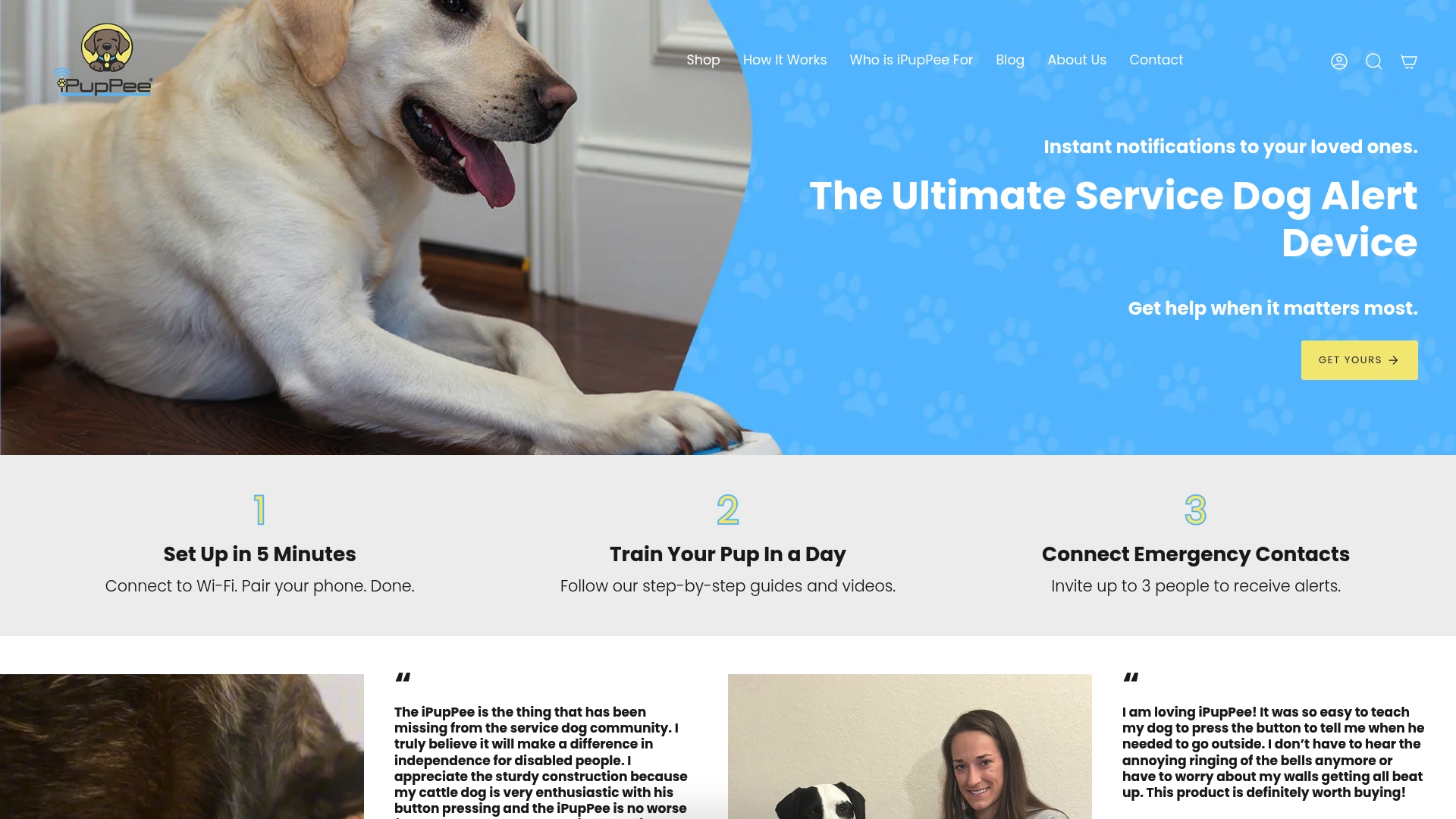
Take the next step toward safety and confidence for both you and your rescue companion. See how ipuppee.com empowers owners to create trust and independence with every press of a button. Shop now or explore our site for training instructions and real-life stories from owners who have transformed their dog’s life. Start building a safer, more connected future with your rescue dog today.
Recommended Articles
-
https://ipuppee.com/blogs/news/why-train-rescue-dogs-benefits-2025)
-
https://ipuppee.com/blogs/news/dog-response-training-guide-owners-handlers-2025)
-
https://ipuppee.com/blogs/news/training-techniques-for-dogs-guide-owners-handlers-2025)
-
https://ipuppee.com/blogs/news/dog-behavioral-training-guide-2025)
-
https://ipuppee.com/blogs/news/how-to-teach-dogs-basic-commands)

